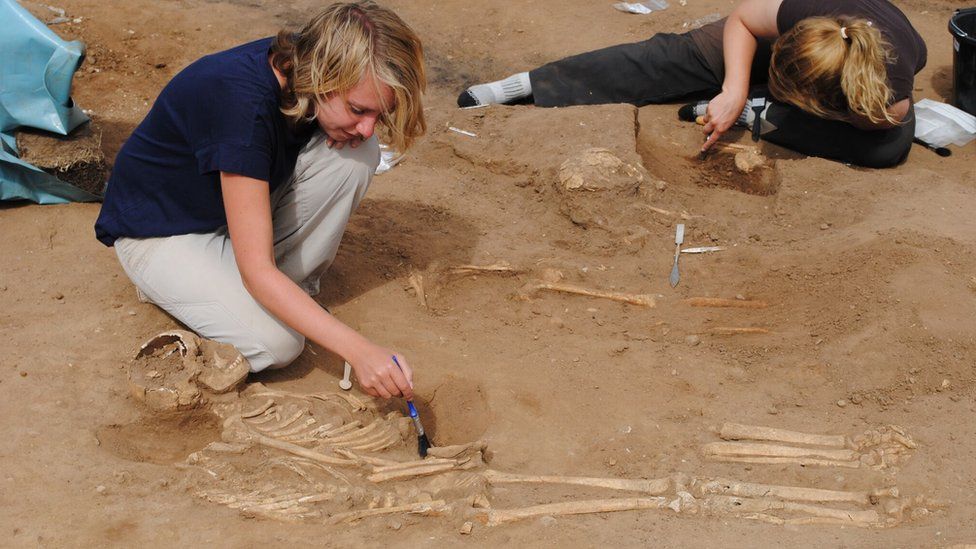Thornton Abbey Black Death plague pit excavated
- Published

Dr Hugh Willmott said the mass burial was "completely unexpected"
A Black Death burial pit containing 48 skeletons, including the remains of 27 children, has been found at the site of a 14th Century monastery hospital.
The bodies were excavated at Thornton Abbey in North Lincolnshire.
Between 1347 and 1351 the "Great Pestilence" swept westward across Europe killing millions of people. It later became known as the Black Death.
It arrived on Britain's shores in 1348 and is believed to have wiped out up to 60% of the population at the time.
Follow BBC England on Pinterest, external
For more on this story and others in Lincolnshire
Dr Hugh Willmott, from the University of Sheffield's Department of Archaeology, said: "The finding of a previously unknown and completely unexpected mass burial dating to this period in a quiet corner of rural Lincolnshire is thus far unique, and sheds light into the real difficulties faced by a small community ill-prepared to face such a devastating threat."
The large burial site suggests the community was overwhelmed by the Black Death and the number of people who died, he added.
Tests revealed the presence of Yersinia pestis (the bacterium responsible for the plague)
The plague
The plague is one of the oldest identifiable diseases known to man
It is spread from one rodent to another by fleas, and to humans either by the bite of infected fleas or when handling infected hosts
Recent outbreaks have shown that plague may reappear in areas that have long been free of the disease
It can be treated with antibiotics such as streptomycin and tetracycline
Source: World Health Organization
Remains of teeth from the skeletons found at the site were sent to a university in Canada where ancient DNA was successfully extracted.
The tests revealed the presence of Yersinia pestis, the bacterium responsible for the plague.
Two further 14th Century plague pits were also uncovered - one in 2013, the other in 2014 - during the building of the Crossrail project in London.
A pendant or Tau Cross was found at the dig, it was supposed to ward off illness
- Published8 September 2016
- Published30 March 2014